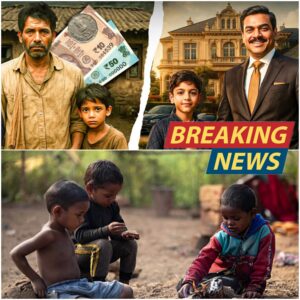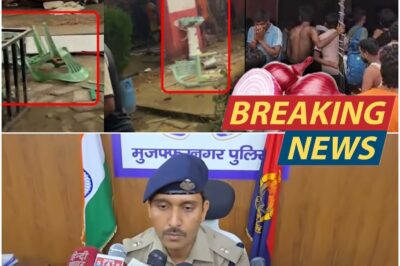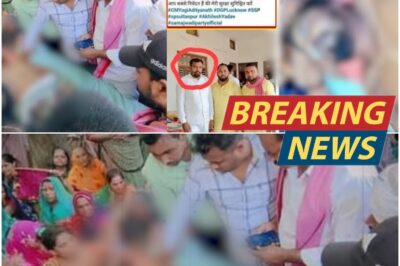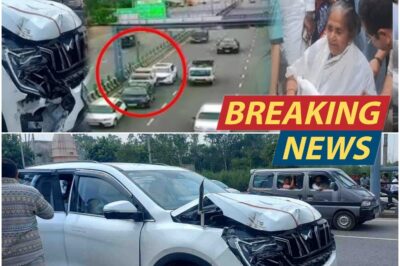The Harsh Truth: Over 70 Million Indians Struggle to Survive on Less Than ₹62 a Day
Imagine holding just ₹62 in your hand—a ₹50 note, a ₹10 note, and a ₹2 coin. Now imagine this meager sum is all you have to feed your family and meet every basic need for the entire day. For over 70 million people in India, this is not just a thought experiment, but a harsh daily reality.
.
.
.

A Day’s Wage That Can’t Buy Even the Basics
₹62, or less than a dollar, won’t buy you a liter of full-cream milk in India. It won’t get you a liter of petrol or diesel, a kilogram of lentils, a dozen eggs, or even the cheapest monthly mobile recharge. Yet, more than 70 million Indians—equivalent to the entire population of the United Kingdom—struggle to earn even this much in a day.
This shocking truth may sound like a cruel joke, but it’s a reflection of India’s deep-rooted poverty, even after 77 years of independence.
Trapped in the Vicious Cycle of Poverty
For millions of Indians, daily survival means hard labor—pulling rickshaws, selling goods on the streets, or taking up any available work. Despite their relentless efforts, their lives rarely change. The system, plagued by unequal access to education, healthcare, and employment, keeps them trapped in poverty. When they die poor, society often blames them for not trying hard enough, ignoring the systemic failures that denied them opportunities.
The Inheritance of Poverty
Statistics reveal a sobering reality: in India, your economic fate is tied more to your birth than your hard work. The intergenerational income elasticity (IGE) is 0.56, meaning over half of your earning potential is determined by your parents’ income. If your parents are poor, chances are you will remain poor. The story is even starker for marginalized communities: for tribal families, 66% of children’s incomes are determined by their parents’, for Dalits it’s 51%, for OBCs 53%, and for Muslims 63%.
The Mirage of Freebies and the Real Issues
Every election season, political parties roll out promises of free electricity, water, cheap gas cylinders, and cash handouts. But these offers often distract from the real issues—quality education, accessible healthcare, and meaningful employment. Data shows that an educated family can improve the lives of the next generation by 76%. But the lure of short-term freebies overshadows demands for long-term reforms.
Economic Growth, But For Whom?
India is now the world’s fourth-largest economy. GDP is rising, stock markets are booming, and property prices are soaring. Yet, the average Indian still can’t afford to buy a house even after saving for decades. For the wealthiest 5% in Mumbai, it would take 109 years of savings to buy a home without a loan. For the poor, homeownership remains an impossible dream.
The Need for a Mindset Shift
The biggest mistake, perhaps, has been focusing on “removing poverty” rather than “creating prosperity.” True progress will come when we strive to make the poor economically empowered—by ensuring equal access to quality education, healthcare, and jobs for every child, youth, and family.
The Way Forward
Before supporting any political party, Indians must demand solutions to their real problems: better schools, hospitals, roads, and jobs. When citizens make their issues the center of political discourse, leaders will have no choice but to listen. Only then can India take a giant leap toward regaining its status as the “golden bird”—a land of prosperity for all.
News
Missing PG Student Monica from Darbhanga CM College Found in Shocking Condition—Police Stunned
Missing Darbhanga CM College Student Monica Found Safe—Reveals She Left Home Willingly to Marry A week-long mystery surrounding the disappearance…
Chaos on the Kanwar Yatra: Devotees Go on Rampage, Vandalize Dhaba from Muzaffarnagar to Roorkee!
Kanwar Yatra Turns Violent: Kanwariyas Vandalize Dhabas from Muzaffarnagar to Roorkee Over Onion in Food A shocking wave of violence…
Uproar After Samajwadi Party Leader Sunil Yadav’s Death: Ex-MLA and Brother-in-Law Named in FIR!
Uproar in Sultanpur After Samajwadi Party Leader Sunil Yadav’s Mysterious Death: Former MLA and Brother-in-Law Named in FIR A wave…
Shocking Viral Video: Teacher Beats Student with Stick in Bihar School—Discipline or Violence?
Bihar School Turns Battleground: Viral Video Shows Teacher Beaten Brutally by Angry Parents—Discipline or Violence? A shocking video has taken…
Forced to Strip at Knifepoint: Obscenity in the Name of Jobs—What’s Happening in Uttar Pradesh?
Job Promise Turns Nightmare: Woman Forced to Undress at Knifepoint in Uttar Pradesh Official’s Quarters Uttar Pradesh: A shocking video…
UP Education Minister Injured in Road Accident as Convoy Cars Collide
UP Education Minister Gulab Devi Injured in Road Accident as Convoy Cars Collide Hapur, Uttar Pradesh: Uttar Pradesh’s Education Minister,…
End of content
No more pages to load











